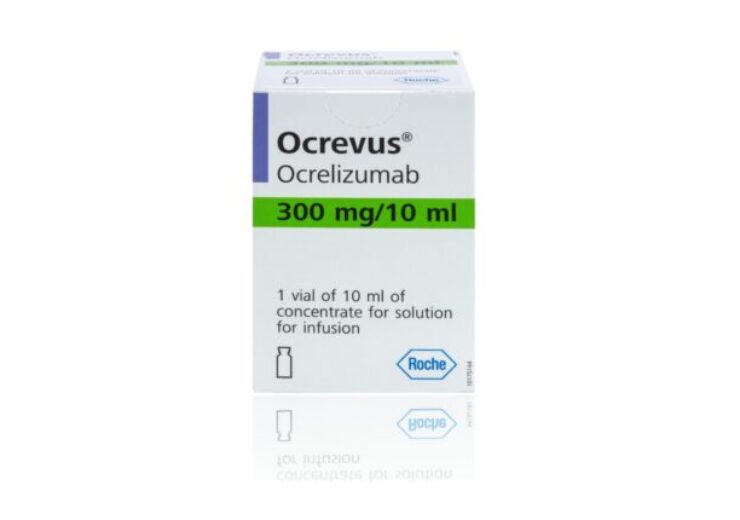As per the results, the investigational twice-yearly, 10-minute subcutaneous injection was found non-inferior as measured by Ocrevus levels in the blood of patients from day one to 12 weeks

A product shot of Ocrevus. (Credit: F. Hoffmann-La Roche Ltd)
Roche said its Ocrevus (ocrelizumab) subcutaneous injection was found non-inferior to its intravenous (IV) infusion and provided near-complete suppression of brain lesions in the Phase 3 OCARINA II study of patients with relapsing or primary progressive multiple sclerosis (RMS or PPMS).
Ocrevus is a humanised monoclonal antibody that targets CD20-positive B cells, which is said to be a key contributor to myelin and axonal damage.
The investigational subcutaneous formulation combines Ocrevus with Enhanze drug delivery technology of Halozyme Therapeutics.
As per the results, an investigational twice-yearly, 10-minute subcutaneous injection was found non-inferior as measured by Ocrevus’ levels in the blood of patients from day one to 12 weeks.
Peak Ocrevus blood concentrations were found comparable to subcutaneous injection (132 µg/mL) and IV infusion.
The subcutaneous injection also offered rapid, sustained, and near-complete B-cell depletion that was like Ocrevus IV infusion, which was sustained over 24 weeks.
By 24 weeks, MRI lesion activity was rapidly and almost completely suppressed by both Ocrevus subcutaneous injection and Ocrevus IV infusion.
Furthermore, most of the patients showed no T1 gadolinium-enhancing (T1-Gd+) lesions, which are indicators of active inflammation, and no new or enlarging T2 lesions, which show the severity of the disease or lesion load.
The safety profile of subcutaneous injection was similar to the known safety profile of IV infusion. Additionally, no new safety signals were found for subcutaneous injection.
Roche chief medical officer and global product development head Levi Garraway said: “We are pleased to share that Ocrevus 10-minute subcutaneous injection suppressed brain lesions as effectively as the intravenous infusion.
“Having this additional treatment option may improve the treatment experience for both patients and physicians, and we hope the twice-a-year dosing will offer the same high adherence and persistence.’’
OCARINA II is a late-stage, global, multi-centre, randomised study.
It assessed the pharmacokinetics, safety, and radiological and clinical effects of the subcutaneous formulation of monoclonal antibody compared with IV infusion in 236 patients.
The primary endpoint is non-inferiority in the area under the serum concentration-time curve.
Secondary endpoints included the maximum serum concentration of Ocrevus, the total number of active, gadolinium-enhancing T1 lesions at eight and 12 weeks, new or enlarging T2 lesions at 12 and 24 weeks, and others.
